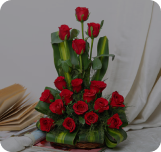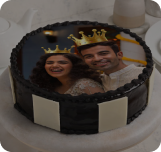About Lohri

About Lohri
Lohri is a popular festival celebrated in the Indian Subcontinent. The significance and legends about the Lohri festival link the festival to the Punjab region. It is believed that the Lohri festival marks the end of winter and celebrated by Hindus and Sikhs in the northern region of the Indian subcontinent to traditionally welcome longer days. The festival of Lohri is observed the night before Makar Sankranti, also known as Maghi. Lohri falls in the month of Paush and is set by the solar part of the lunisolar Vikrami calendar. Furthermore, in most years it falls around January 13 of the Gregorian calendar. The Lohri festival is an official holiday in Punjab, the Jammu region of Jammu and Kashmir, and Himachal Pradesh. The festival is also celebrated in Delhi and Haryana but is not a holiday.
Origin Of The Lohri Festival
The historical references of the Lohri festival are mentioned by European visitors such as Wade who visited the Lahore Darbar of Maharaja Ranjit Singh in 1832. Further reference is made by Captain Mackeson in which he stated that Maharaja Ranjit Singh distributed suits of clothes and large sums of money as rewards on Lohri day in 1836. Furthermore, in 1844, the celebration of Lohri with the making of a huge bonfire at night is also noted in the royal court.
The accounts of the Lohri celebration in royal circles do not discuss the origins of the festival. However, there is much folklore about Lohri. According to folklore, Lohri is the celebration of the arrival of longer days after the winter solstice. It celebrates the days getting longer as the sun proceeds on its northward journey. The day after Lohri is celebrated as Maghi Sangrand.
Lohri is an ancient mid-winter festival originating in regions near the Himalayan mountains where winter is colder than the rest of the subcontinent. Hindus and Sikhs traditionally lit bonfires in their yards after weeks of work for the rabi season cropping. They socialized around the fire, sang, and danced together as they marked the end of winter and celebrated the start of longer days. Furthermore, instead of celebrating Lohri on the eve of when the winter solstice actually occurs, Punjabis celebrate it on the last day of the month during which winter solstice takes place. Thus, the Lohri festival commemorates the passing of the winter solstice.
Significance Of The Lohri Festival
The ancient significance of the Lohri festival is that it is a winter crop season celebration and is linked to the Punjab region. Popular folklore links Lohri to the tale of Dulla Bhatti. The central theme of many Lohri songs is the legend of Dulla Bhatti who lived in Punjab during the reign of Mughal Emperor Akbar. He was regarded as a hero in Punjab for rescuing Hindu girls from being forcibly taken to be sold in the slave market of the Middle East.
Amongst those girls, he saved two girls named Sundri & Mundri who gradually became a theme of Punjab's folklore. As a part of Lohri celebrations, children go around homes singing the traditional folk songs of Lohri with "Dulla Bhatti" name included. One person sings, while others end each line with a loud "Ho!" sung in unison. After the song ends, the adults of the home are expected to give snacks and money to the singing troupe of youngsters.
Celebration Of Lohri Festival In India
The festival of Lohri is celebrated by lighting bonfires, eating festive food, dancing, and collecting gifts. Lohri is celebrated with a bonfire. The lighting of a bonfire during this winter festival is an ancient tradition. Ancient people lit the bonfire to reignite the return of longer days. This is a very ancient tradition. The bonfire is lit at sunset in the main village square or in private yards. People toss sesame seeds, gurh, sugar candy, and rewaries on the bonfire. Then, they sit around the bonfire and sing and dance till the fire dies out. Some people perform a prayer and go around the fire. This is to show respect to the natural element of fire, a tradition common in winter solstice celebrations. It is traditional to offer guests til, gachchak, gurh, peanuts, and phuliya or popcorn. Furthermore, milk and water are also poured around the bonfire by Hindus to thank the Sun God and seek his continued protection.
Lohri celebrations reach a higher pitch of excitement in houses where a marriage or childbirth takes place recently. Moreover, most North Indians usually have private Lohri celebrations in their houses. And, the rituals of the Lohri festival are performed with the accompaniment of special Lohri songs.
Singing and dancing form an intrinsic part of the celebrations. People wear their brightest clothes and come to dance the Bhangra and Gidda to the beat of the dhol. Punjabi songs are sung, and everybody rejoices. Furthermore, Sarson da saag and Makki di roti are usually served as the main course at a Lohri dinner. Lohri is a great occasion that holds great importance for farmers. However, people residing in urban areas also celebrate Lohri as this festival provides the opportunity to interact with family and friends.
In Punjab, the harvest festival Lohri is marked by eating sheaves of roasted corn from the new harvest. The January sugarcane harvest is celebrated in the Lohri festival. Sugarcane products such as Gurh and Gachak are the central part of the Lohri celebrations. Moreover, Nuts that are harvested in January are also a part of the Lohri festival. The other important food item of Lohri is radish which can be harvested between October and January. Mustard greens are cultivated mainly in the winter months because the crop is suitable for agro-climatic conditions. Accordingly, mustard greens are also winter produce. Furthermore, it is traditional to eat Gajak, Sarson da saag with Makki di roti, radish, groundnuts, and jaggery. It is also traditional to eat "til rice" which is made by mixing jaggery, sesame seeds, and puffed rice. In some places, this dish, more like a snack is named Tilcholi.
In various places of Punjab, about 10 to 15 days before Lohri, groups of young and teenage boys and girls go around the neighborhood collecting logs for the Lohri bonfire. In some places, they also collect items such as grains and jaggery which are sold and the sale proceeds are divided amongst the group. Furthermore, on the day of Lohri, children go from door to door singing songs. Then, sweets and savories and occasionally money is given to these children. Turning them back empty-handed is regarded inauspicious.
The collections gathered by the children are known as Lohri and consist of til, gachchak, crystal sugar, gurh (jaggery), peanuts, and phuliya or popcorn. Lohri is then distributed at night during the festival. Till, peanuts, popcorn, and other food items are thrown into the fire. It is believed that throwing food into the fire represents the burning of the old year and starts the next year on Makar Sankranti.

















